Dr. Franklin’s Tree & The Bastard Progeny
“In modern times, the work of plant explorers has not disappeared. In the last century, over a thousand previously unknown species of orchid have been found in Ecuador alone! Great plant hunters like Dan Hinckley, who created the world famous Heronswood Nursery in Washington State, still climb mountainsides and crawl along riverbanks in search of new and wonderful discoveries.”—William A. Balk, Jr.
Epicurus’ Porch
By William A. Balk, Jr.
ELKO South Carolina—(Weekly Hubris)—August 2017— Trekking through the Georgia wilderness in October of 1765, the father and son team of naturalists, John and William Bartram, came across a small, sandy plot of a couple of acres along the Altamaha River, not far from where Jesup and Darien are now located. It was populated by a colony of a previously unknown small tree, which they recorded and, on subsequent visits, they collected seeds and were able to grow them in their nursery in Philadelphia. They named the new genus Franklinia, in honor of their great friend, Benjamin Franklin, and gave it the specific epithet, alatamaha, somehow adding an extra “a” to the usual spelling of the river which had produced the new tree.
The Bartrams remarked that they never saw the tree growing anywhere else, although they covered huge swaths of the wilderness between the Atlantic and the Mississippi River in their quest for New World flora. And, after 1804, no one has ever been able to find the original plot of trees growing along the Altamaha. It is assumed to have been extinct in the wild for more than two centuries, although the seedlings grown from the Bartrams’ original collections have grown and prospered since, for those dedicated growers around the world able to meet the somewhat demanding cultural requirements.
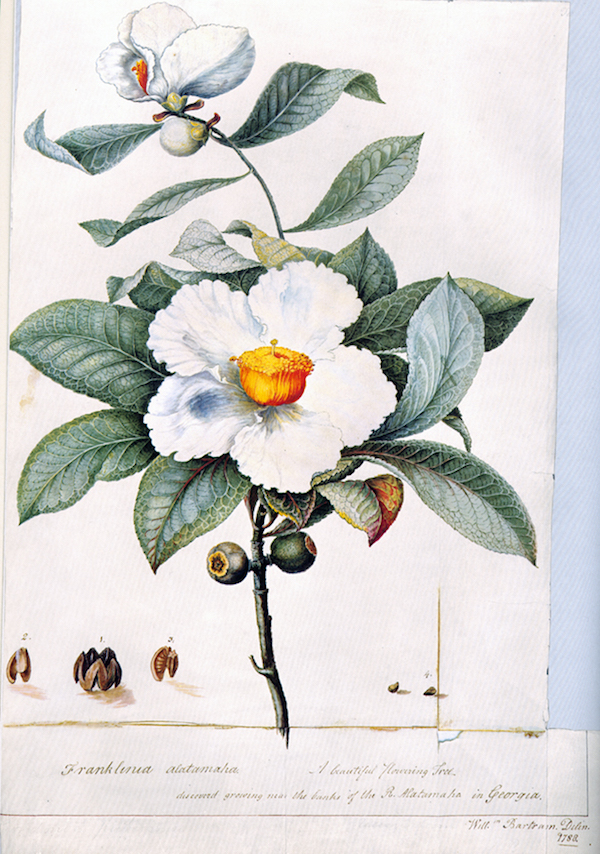
Nowadays, it is a bit challenging even to find a nursery which stocks the Franklinia; inevitably, it is quite expensive, and a great many gardeners end up terribly frustrated with their failed attempts to grow the tree successfully.
Franklinia alatamaha is a monotypic genus, the only species in its particular genus, but it is part of the larger tea family, which also includes camellias and tea. There are several genera in the family rather more closely related to the Franklinia: Gordonia, Stewartia, and Schima.
Gordonia is an interesting plant. The genus has a number of species—perhaps as many as 40—and all but two are native to Southeast Asia. One species of Gordonia is native to Central and South America. And one species of the 40, Gordonia lasianthus, is native to the southeastern part of North America.
Why the interest in these obscure plant-nerd trees?
They are, it must be said, absolutely beautiful. The fall coloring of the large, shiny leaves is a rich, bright red. The flowers are handsome cup-shaped blooms with a striking, golden yellow central boss of many stamens, surrounded by five silky white petals. Both Franklinia and Gordonia flowers are somewhat similar in appearance. It would make gardeners and landscapers very happy to have versions of these trees that were easy to grow and suitable for many conditions. But that has not been the case.
There may be a breakthrough, however. In the last decade, Dr. Tom Ranney of North Carolina State University has developed a rare inter-generic hybrid between Franklinia alatamaha and Gordonia lasianthus, one which improves on the best qualities of each genus and minimizes some of the most difficult characteristics of each. The result, now officially called (in the nomenclature of botanists) xGordlinia grandiflora, is hardier than either parent, is evergreen like Gordonia, produces handsome flowers in early summer—and, perhaps best of all, will be widely available commercially within a few years.
I mention all of this because I am so excited that the little xGordlinia that I received two years ago set a dozen or so big fat flower buds last spring, and the first flowers opened last July. I’ve just gone out to look at this year’s developments, and the little tree is looking fine. Our bizarre weather this year—hot, then cold winter; dry, then rainy spring; flooding early summer rains—seem to have delayed its blooming and, in the leafy photo, you can detect the round buds.

It’s a beauty and, combined with the handsome fall color in the evergreen foliage, this is a gorgeous landscape tree. It reputedly may reach 30 feet in height. I just hope that I can find the right care and attention to keep it growing.
I include a photo of a full bloom taken last year at 5:00 p.m., when the temperature was still at 95 degrees. It’s about 4 inches across, just as crisp and lovely as when it opened that morning. This is a plant to look for!
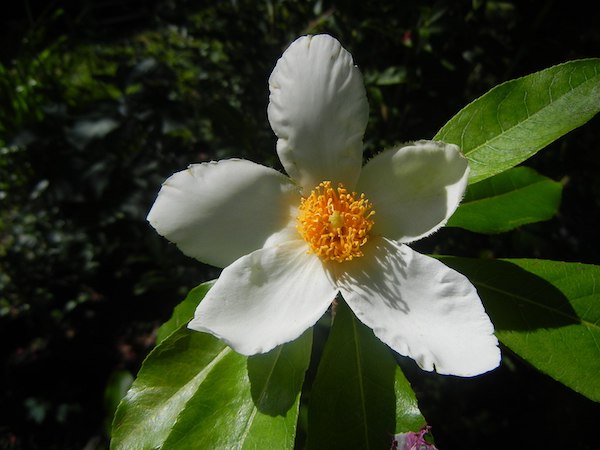
By the way, others have taken up the challenge and have produced other specimens from crossing the same two genera, yielding several other varieties of xGordlinia. And even more recently, botanists have experimented with some success with hybridizing Franklinia with its Asian cousin, Schima. Very recent genetic study has revealed that Schima is more closely related to Franklinia than Gordonia is; that may make hybridizing across those very challenging generic boundaries a little easier, which in turn could result in more crosses and a wider variety of plants than might come from the Gordonia crosses. The future is looking very bright, indeed!
The Bartrams weren’t the only early plant explorers to find treasures among our forests and clearings here in the American South. At about the same time as the Bartrams, in the early 18th Century, Mark Catesy was making a name for himself with remarkable discoveries of both flora and fauna. Even earlier, John Tradescant the Elder was asking his friends in America to send him specimens back in England; and his son, John Tradescant the Younger, made the voyage himself—if only to Virginia—in 1628 to collect for their famous garden and museum in Lambeth on the Thames. There were botanists, scientists, and collectors living here, as well. In South Carolina, Dr. Alexander Garden (for whom the gardenia is named) practiced medicine and collected botanical and zoological specimens from near his Charleston home and his plantations, including the one at Gardens Corner near Beaufort.
These plant hunters brought back and introduced to the world such wonders as our American magnolias, the bald cypress, the native tulip tree (liriodendron), kalmia, rhododendron, and the Venus flytrap.
In modern times, the work of plant explorers has not disappeared. In the last century, over a thousand previously unknown species of orchid have been found in Ecuador alone! Great plant hunters like Dan Hinckley, who created the world famous Heronswood Nursery in Washington State, still climb mountainsides and crawl along riverbanks in search of new and wonderful discoveries.
Less dramatic, but fully as important, is the work done by homegrown botanists, like our own Daniel C. Payne here in Beaufort on the South Carolina coast.
Danny is constantly stopping and looking in ditches; the edges of woodlands, shell middens, and fire-burnt meadows to see what’s there. His keen eye and encyclopedic memory has led to more than a few wonderful surprises, although they might not be quite as spectacular as finding Frankinia alatamaha. In preparing his thesis for his master’s degree, Danny identified many plants which had been unknown in the area. Only recently, a species previously known only in Florida—the adorable little Baby Jump-up, Mecardonia procumbens—Danny found as a small population growing in nearby Jasper County. Besides being a professional coup for its discoverer, this sort of documentation opens up all kinds of knowledge, research, and questions, affecting how we understand climate change, human or other influences on species survival, interrelationships among companion species, and a number of other avenues of knowledge.
Our modern plantsmen, such as Danny Payne, keep us learning, growing, and changing how we garden. That’s why I sometimes find myself sneaking around Danny’s little nursery, hoping to get a first glimpse of something as glorious as Franklinia alatamaha. Danny, though, gets as excited by tiny treasures like the Jasper County Baby Jump-up. It—all of it—is pretty wonderful . . . and Danny’s there to remind me if I ever forget.

All the images used are in the public domain. The first image of Franklinia alatamaha is by Wendy Cutler and is from Wikimedia Commons; the second image, by William Bartram, is also from Wikimedia Commons; the third and fourth images are the work of the author.
A segment of this essay was first published in Lowcountry Weekly in 2016.
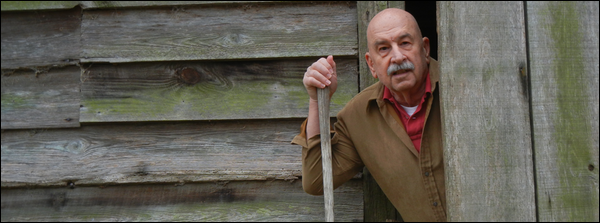
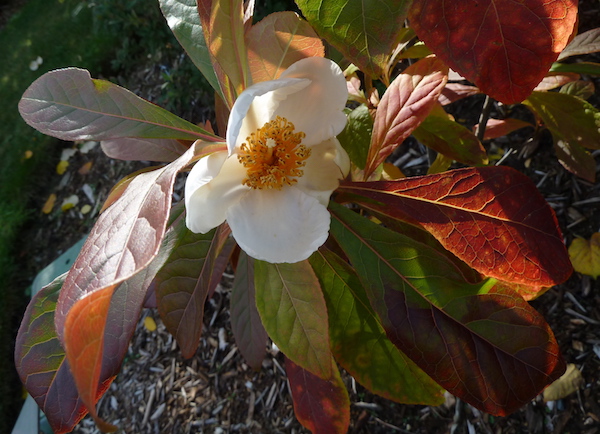
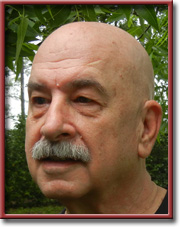
5 Comments
Elizabeth Boleman-Herring
Will, we are soon going to need a consulting South Carolina plant-nerd on our tiny, Up-Country plantation: might we tempt you north with our little stand of . . . hemlocks?
Will
Is that near the Esso Club?
Elizabeth Boleman-Herring
Close enough…..
Elizabeth Boleman-Herring
It has JUST occurred to your editor, very late indeed, what a wonderful Harry Potter title “Dr. Franklin’s Tree & The Bastard Progeny” would make!
William Balk
it’s a little known fact that Bartram the Elder was a graduate of Hogwarts School…….